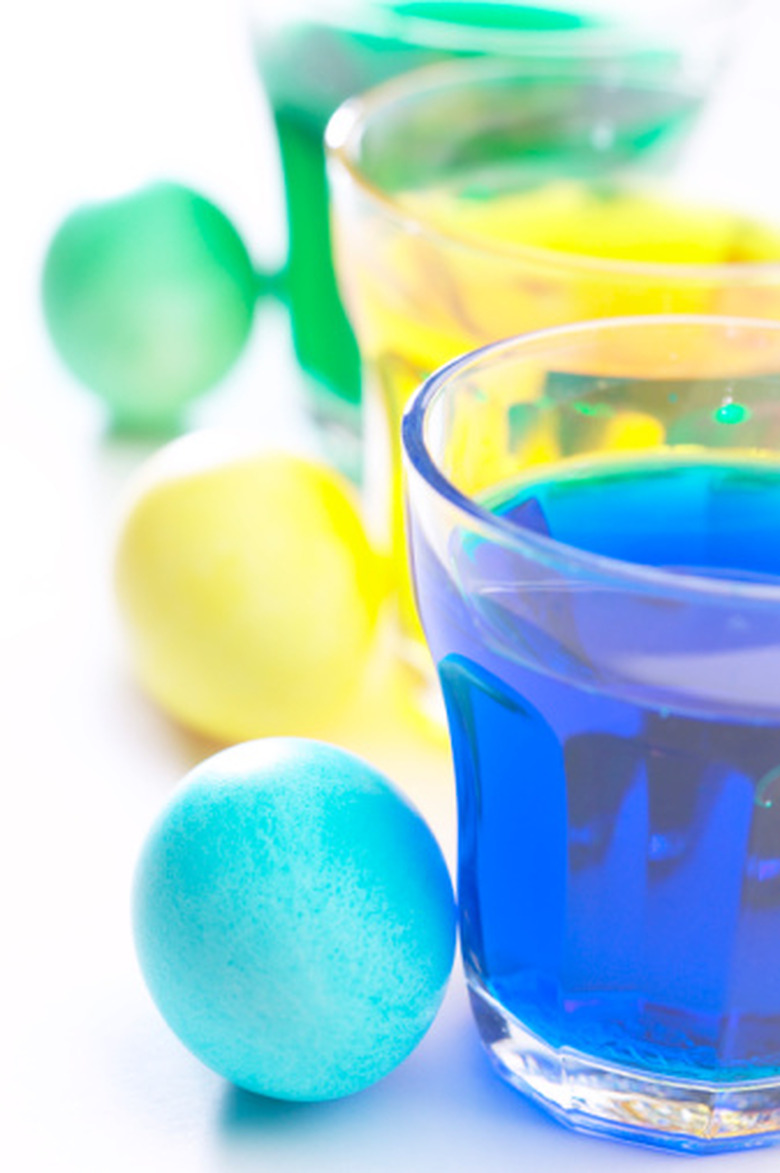Osmosis Egg Experiments
Osmosis is the phenomenon whereby a high concentration of water passes through a semi-permeable membrane to an area with a lower concentration of water. By using just an egg and a few other household materials, you can put together an experiment demonstrating osmosis, which is a process necessary to both plant and animal life.
Create a Shell-less Egg
Create a Shell-less Egg
Put an egg in a clear glass filled with vinegar and cover the container. The outside of the egg should get bubbly. Then, put the container in the refrigerator for 24 hours. Pour the vinegar out carefully and gently pour in fresh vinegar to cover the egg. Put the container back in the refrigerator for another 24 hours. Gently scoop the egg out without breaking the membrane. The outside of the egg is now just the membrane. The acetic acid of the vinegar will have broken up the calcium carbonate crystals, thus dissolving the shell. Note the size of this "naked" egg compared to a regular egg.
Shell-less Egg in Food Coloring
Shell-less Egg in Food Coloring
Put a few drops of food coloring in a container filled with water. Insert a single shell-less egg (as per the experiment above) and leave it covered overnight in the refrigerator. Record your observations the next day. Because the water solution in the container has a higher concentration of water than the egg, water will pass into the egg, thus changing its color.
Shell-less Egg in Corn Syrup
Shell-less Egg in Corn Syrup
Create two shell-less eggs using the first experiment. Put one egg in a container covered with water and put the other one in a container covered with corn syrup. Refrigerate these containers overnight. Unlike water, corn syrup has a lower water concentration than the egg. The egg covered in corn syrup will be smaller than the egg covered in water because water will pass from the egg into the syrup.
Bouncy Egg
Bouncy Egg
Hard-boil an egg then put it in a closed container covered with vinegar. Leave it in the refrigerator for two days. Remove the egg, take off the shell and rinse it. Feel the texture of the egg. Try dropping the egg from a low height. The egg should bounce. Do not try this with an uncooked egg, which will break apart.
Cite This Article
MLA
Sorenson, Lexi. "Osmosis Egg Experiments" sciencing.com, https://www.sciencing.com/osmosis-egg-experiments-8455706/. 24 April 2017.
APA
Sorenson, Lexi. (2017, April 24). Osmosis Egg Experiments. sciencing.com. Retrieved from https://www.sciencing.com/osmosis-egg-experiments-8455706/
Chicago
Sorenson, Lexi. Osmosis Egg Experiments last modified March 24, 2022. https://www.sciencing.com/osmosis-egg-experiments-8455706/
